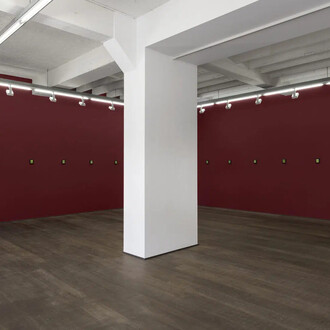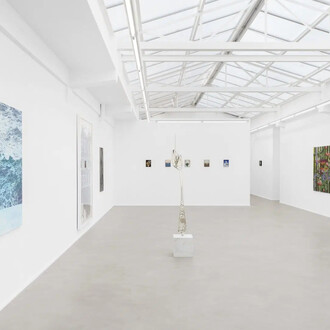Sterling Ruby is known for the multifaceted nature of his practice, which encompasses painting, ceramics, collage, video and photography, textiles, sculpture and installations. Working in a wide range of media, from the traditional to the unconventional, Ruby has created an oeuvre that, while remarkably diverse, is firmly rooted within a complex and coherent artistic strategy.
Often drawing upon autobiographical, art historical or sociological sources, Ruby’s work is frequently referred to as ‘post-humanist’ – a term that broadly describes a society which, thanks in part to technological advancement, has evolved beyond fixed categories of being (e.g. time/place), or predetermining classifications (e.g. animal/human). The seemingly ‘incomprehensible’ visual range of Ruby’s practice thus embodies a schizophrenic, ‘post-everything’ state of perpetual fragmentation and synthesis. A world in which, according to Ruby, ‘there is just too much information for anything to be coherent or whole.’ His practice involves a combination of philosophical enquiry and material investigation, the latter involving the seemingly endless repurposing, combining and recombining of different techniques and media. This too mirrors a shifting condition of constant deconstruction and reconfiguration, and the idea of a non-hierarchical, boundary-less universe.
Sterling Ruby (b. 1972) lives and works in Los Angeles. In 2014 his work was included in the Whitney Biennial, the 10th Gwangju Biennale and the 9th Taipei Biennial. Public collections include the Guggenheim Museum, NY; Whitney Museum of American Art, NY; MoCA, Chicago; MoCA, North Miami; MoCA, Los Angeles; LACMA, Los Angeles; MoMA, NY; SFMOMA, San Francisco; MMFA, Montreal; Moderna Museet, Stockholm; Centre Pompidou, Paris; and Tate Modern, London.














